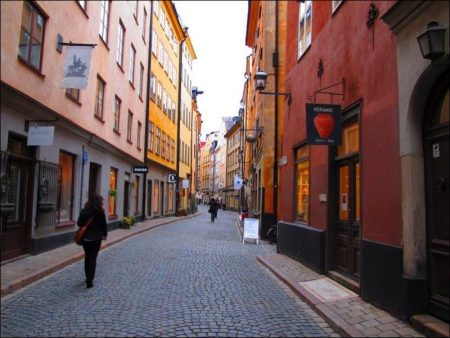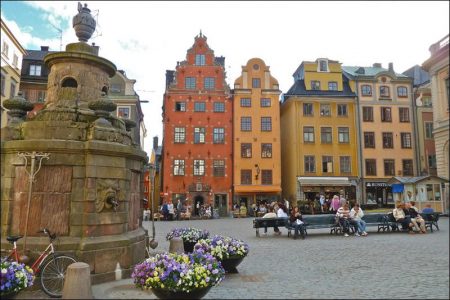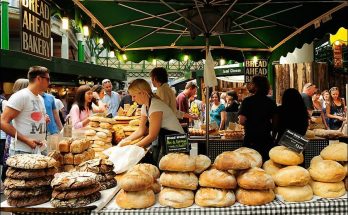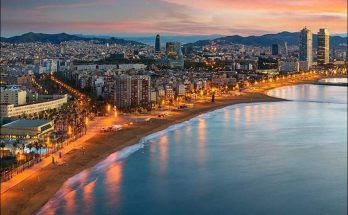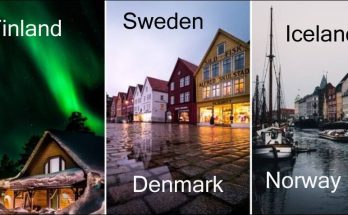Stockholm, very simply stated, is like no other city you have ever seen. At times, it resembles a Camelot, all surrounded by forests and laced with spires and turrets, very stately in its aspect, and seemingly as conservative as the John Birch Society. To think that this is the birthplace of cradle-to-grave security, and of experimental marriage, is a shock that often takes a few hours to overcome.
Physically, the city is one of the loveliest of capitals. It spreads over 14 separate islands, each connected by vaulting bridges, under which the waters of Lake Malaren-which flow into the Baltic Sea -are often covered with sailboats, cruising deep into the city. Same of the islands rise on steep diffs from the water, and on these diffs, high above, are the stern, dignified buildings of Sweden, untouched by the ravages of war for nearly two hundred years. Best yet, the city is surrounded by woodlands and farms, never more than 10 minutes away from any point in town.
Viewed from another aspect, the city is one of the most sophisticated in Europe, not only in the attainments of its art and culture, but in the social relationships of its citizens. There is no public graft in Sweden, no discernible poverty. If you’ll probe deep enough, you’ll be constantly surprised by the projects and ideas erupting about you: the futuristic suburbs, all built within the past ten years;the ingenious efforts to make life pleasant and full, within a framework of democracy. It may be a minor example, but it’s typical of Sweden, that every school child under 14 is given a free ticket on the Swedish Railways to make a yearly summer vacation trip to any point in Sweden.
For the tourist, there’s an endless variety of sights and activities: the unique open air “museums,” the Archipelago of Stockholm, the brilliant Royal Dramatic Theatre, the Milles Sculptures, the jazz dance hall called “Nalen,” the Katarina Elevator. When Hope and I finally had to depart his city, we felt that we were being dragged away.
Here, now, is how I’d organize a first visit:
ORIENTATION: The very first thing to do upon arriving in Stockholm is to go to the hotel accommodations bureau (“Hotellcentralen“) in the Central Station and obtain a room (details appear in our section on hotels, below). Then, after depositing your bags, the very next thing to do is to take the subway (“tunnelbana“) to the “Slussen” stop, where you’ll find the great Katarina Elevator, which rises in an open lift to the roof of a tall building, from which you can see all the way to the Baltic and to the beginning of the Stockholm Archipelago. The city is spread out below you: the boats that go to Finland are on your left, the ships to nearby Russia are directly ahead.
From this vantage point, youıı first begin to understand the arrangement of the 14 islands that make up the city of Stockholm. But only five of them need concern you: Norrmalm, Södermalm, -Gamla Stan, Kungsholmen and Djurgarden (the Deer Park).The big northern island, which contains the shopping areas, the office buildings, and almost all the hotels we’ll recommend, is the Norrmalm. The major squares in the Norrmalm are the Norrmalmstorg, the Stureplan, and the Gustav Adolfs Torg (where the Opera is located).
Directly below the Norrmalm, and almost touching upon it, is the tiny island of Gamla Stan-the Old City-where the Royal Palace stands, and where the streets are narrow, twisting, and incredibly picturesque. Although there are some cheap hotels here, they’ re all in centuries-old and somewhat-damp-feeling buildings, and we’ve recommended none of them. The Gamla Stan does have some of the best restaurants of Stockholm, together with several bustling shopping streets, so narrow that cars are excluded. It can’t be missed.
Directly below the Gamla Stan is Södermalm-the Brooklyn of Stockholm-where the residents speak with a special argot all their own, and are fiercely proud of their island. This is almost entirely a residential area, and virtually no tourists-including us-go there.It’s at the top of the Södermalm, however, at the point where the island nearly touches upon the Gamla Stan, that the Katarina Elevator stands.
To the left of the Gamla Stan is the Kungsholmen, site of the major government buildings of this capital of Sweden, including the Town Hall of Stockholm. Except for the Town Hall-which you definitely should visit-there’s little to attract you to Kungsholmen. But to the right of the Gamla Stan (after first skipping over an even tinier island-the Skeppsholmen-a naval base), you’ll find the magnificent Djurgarden (“Deer Park”), pronounced yoor-gohr-dun, a breathtaking, wooded fairyland, on whose lands the royalty of Sweden once rode to the hounds and let graze their pet deer, and which even today is maintained solely as a park, with no residential or business buildings on it. It’s to Djurgarden that the people of Stockholm go for their summer recreation-to the fascinating open air museum and park of Skansen, to the carnival grounds of the Tivoli Gröna Lund, and to the various dance halls scattered near both spots.
Visits: 144
